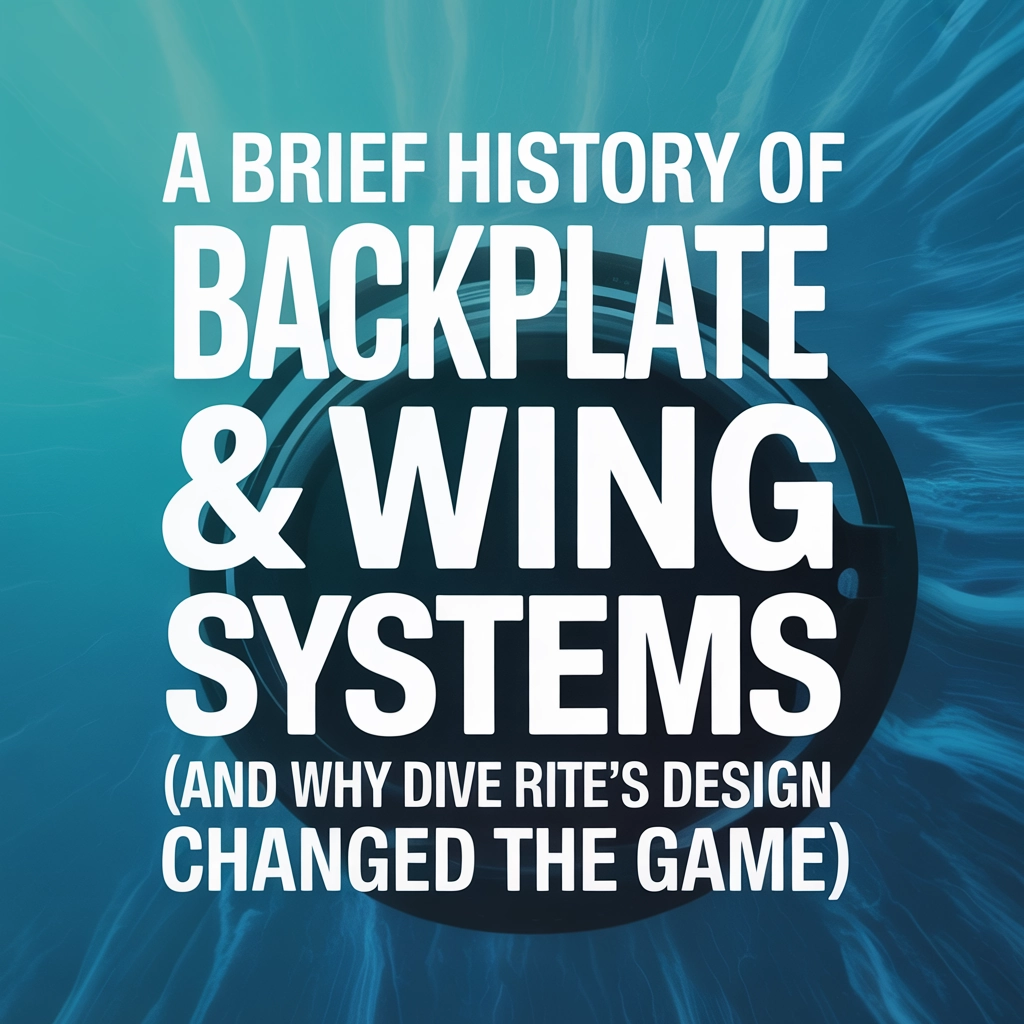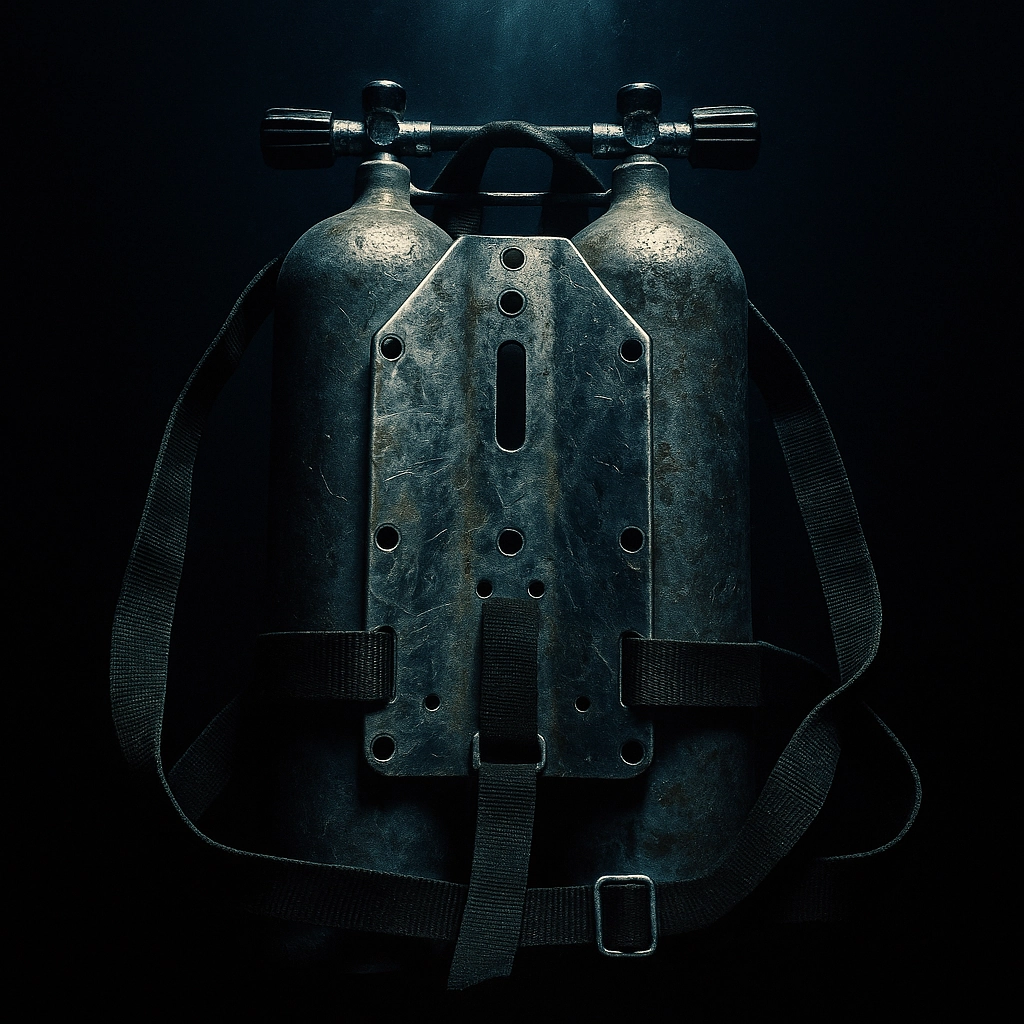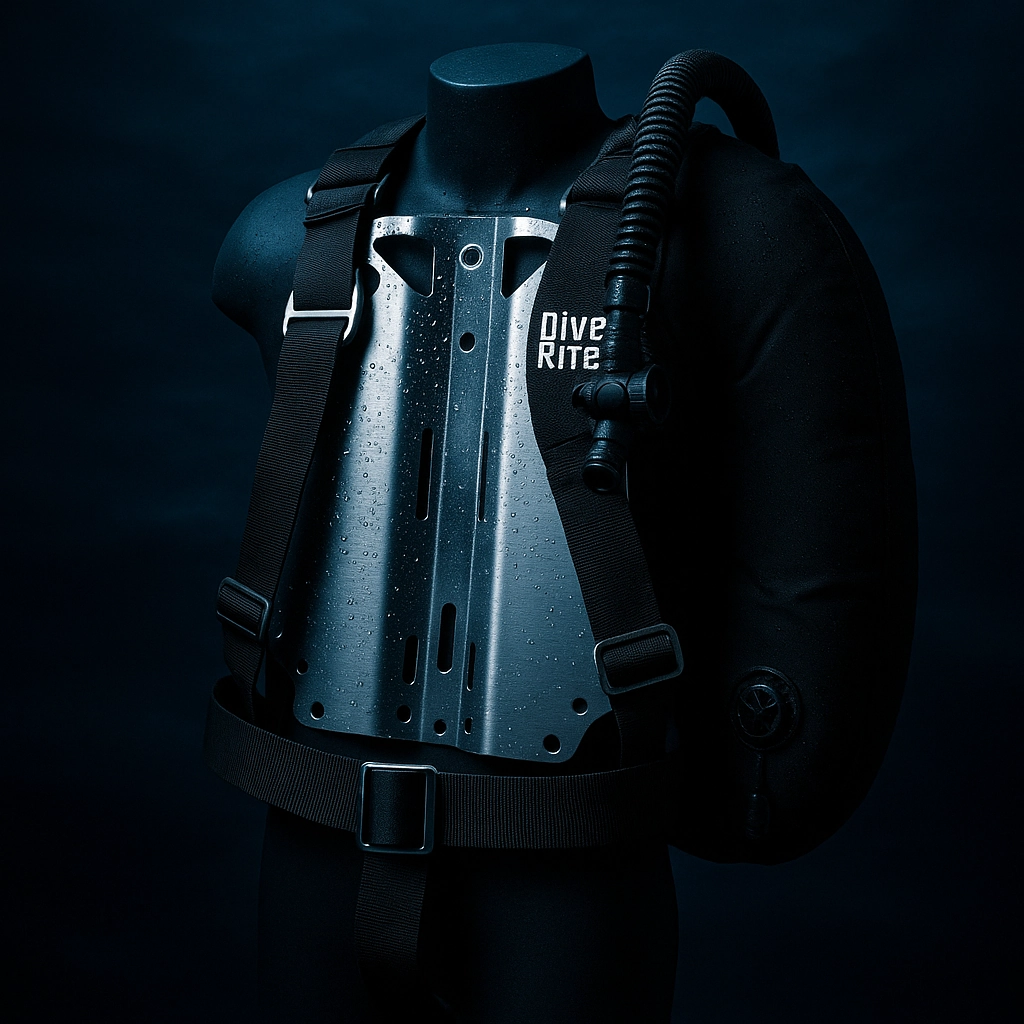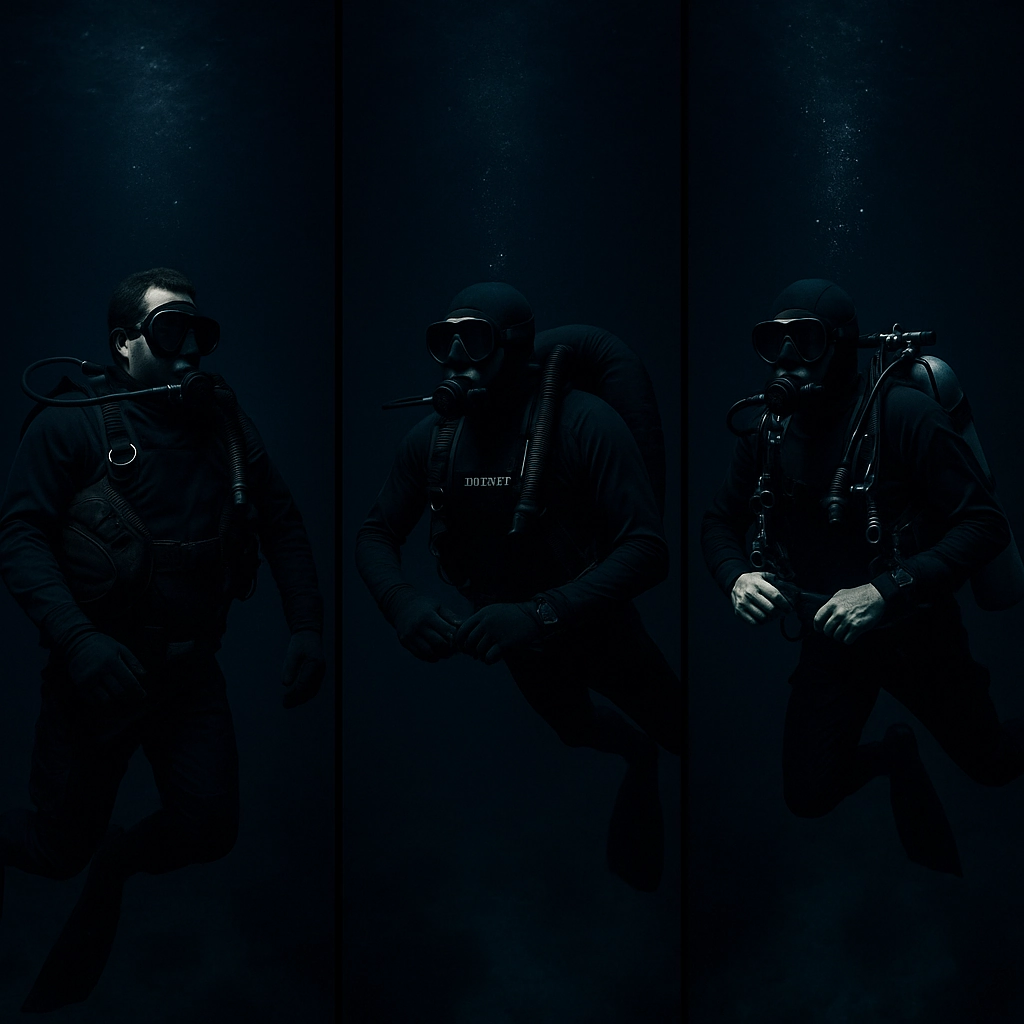A Brief History of Backplate & Wing Systems
Zach Haddock Jul 24, 2025
A Brief History of Backplate & Wing Systems (And Why Dive Rite's Design Changed the Game)

The Evolution of Buoyancy Control
If you've been diving for a while, you've probably noticed the growing popularity of backplate and wing (BP/W) systems among technical and recreational divers alike. But this wasn't always the case. For decades, the jacket-style BCD (Buoyancy Control Device) dominated the diving scene. So where did the backplate and wing come from, and why has it become such a game-changer in the dive industry?
As a dive shop that prides itself on offering equipment that enhances your underwater experience, we're diving deep into the fascinating history of the BP/W system and exploring why Dive Rite's contributions revolutionized how we think about buoyancy control.
The Early Days: Birth of the Backplate
The story of backplate and wing systems begins in the challenging environments of cave diving in the 1960s and 70s. Before purpose-built dive equipment was widely available, early technical divers were essentially MacGyvers of the underwater world, cobbling together solutions to problems that mainstream recreational diving hadn't yet addressed.
The earliest versions of what we'd recognize as backplates were simple metal plates designed to solve a critical problem: tank stability. When diving with double cylinders, divers found that traditional straps and harnesses allowed tanks to shift and roll during complex maneuvers – a potentially dangerous situation when navigating tight cave passages.
In the late 1970s, cave diving pioneer Dick Rutkowski and others began experimenting with metal plates that would distribute weight more evenly and keep tanks firmly secured. These early innovations were purely functional – comfort was a distant secondary concern to survival.

The Problem with Traditional BCDs
To understand why backplate and wing systems were revolutionary, we need to consider the limitations of traditional jacket-style BCDs that dominated recreational diving:
- Restrictive Design: Jacket BCDs wrapped around the torso, creating bulk that limited movement and increased drag.
- Limited Modularity: Most were built as single units that couldn't be easily customized or repaired in the field.
- Inefficient Air Distribution: Air would shift within the BCD as a diver changed position, affecting trim and buoyancy.
- Multiple Failure Points: Complex designs meant more zippers, valves, and seams that could fail.
- Poor Technical Diving Support: They weren't designed to handle the rigors of technical diving with multiple tanks and equipment.
Cave and technical divers needed something more reliable, streamlined, and adaptable. This is where Dive Rite enters the picture.
Dive Rite: Pioneers of Modern Backplate Design
In 1984, Florida-based Dive Rite became the first company to commercially produce aluminum backplates specifically designed for diving. This wasn't just another piece of dive gear – it represented a fundamental shift in how equipment could be configured.
What made Dive Rite's approach so revolutionary was their vision of a truly modular system. Rather than creating another all-in-one solution, they broke buoyancy control down to its essential components:
- A sturdy backplate (initially aluminum, later also stainless steel)
- A simple, continuous piece of webbing as a harness
- A separate wing (air cell) that could be matched to the diver's needs
This modular approach meant that each component could be selected, replaced, or repaired independently – a massive advantage for technical divers venturing far from dive shops or repair facilities.
The Technical Advantages That Changed Everything
Dive Rite's backplate and wing systems offered several groundbreaking advantages that would eventually influence the entire industry:
1. Unparalleled Stability
The rigid backplate distributed weight evenly across a diver's back while providing a solid mounting platform for tanks. This eliminated the "tank wobble" that plagued traditional setups and dramatically improved trim – the horizontal body position that's essential for efficient swimming and gas consumption.
2. Customizable Buoyancy
Unlike jacket BCDs with fixed buoyancy capacity, the wing component could be selected based on the diving environment and equipment configuration. Technical divers could choose higher-volume wings for cold water diving with multiple tanks, while warm water divers could opt for smaller, more streamlined wings.
3. Minimalist Design Philosophy
Dive Rite embraced a "less is more" approach that eliminated unnecessary features. Their continuous one-piece webbing harness had minimal failure points and could be adjusted or repaired with basic tools. This simplicity translated to reliability – critical when diving in remote or overhead environments.
4. Streamlined Profile
By moving all buoyancy to the back, BP/W systems created a cleaner profile with less drag. This improved swimming efficiency and made it easier to maneuver in tight spaces – crucial advantages for cave and wreck divers.

From Technical Innovation to Mainstream Adoption
For years, backplate and wing systems remained primarily in the domain of technical divers. The learning curve was steeper than jacket BCDs, the appearance was more utilitarian than stylish, and the comfort (at least initially) was sometimes sacrificed for function.
However, as technical diving practices filtered into recreational diving, the advantages of BP/W systems became increasingly apparent to a wider audience. Manufacturers, including Dive Rite, began to refine their designs to appeal to recreational divers while maintaining the core principles that made the systems so effective.
Key developments included:
- Padding options for increased comfort without compromising functionality
- Lightweight materials making systems more travel-friendly
- Simplified configurations with integrated weight systems for recreational divers
Today, many recreational divers are making the switch to backplate and wing systems, recognizing the benefits of improved trim, greater stability, and equipment longevity.
Why Dive Rite's Design Continues to Matter
Four decades after their introduction, Dive Rite's backplate and wing designs remain influential for several key reasons:
Rugged Reliability
Dive Rite built their reputation on creating equipment that could withstand the harshest conditions. Their backplates are legendary for their durability – it's not uncommon to see 20+ year-old Dive Rite backplates still in service. In an industry where equipment often has a limited lifespan, this longevity is remarkable.
Standardization
Dive Rite's designs helped establish standardized mounting points and configurations that influenced the entire industry. This standardization means that components from different manufacturers often work together, giving divers unprecedented flexibility.
Adaptability
The fundamental design accommodates everything from single-tank recreational diving to complex rebreather setups. Few pieces of dive equipment can claim such versatility across different diving disciplines.
Field Serviceability
Perhaps most importantly, Dive Rite's systems can be adjusted, reconfigured, and repaired with minimal tools – often just a pair of scissors and a lighter to melt webbing ends. This simplicity means that gear issues rarely end a dive trip.

Is a Backplate and Wing Right for You?
While BP/W systems offer numerous advantages, they're not automatically the right choice for every diver. Here's a quick guide to help you decide:
A backplate and wing might be ideal if you:
- Want to improve your trim and body position underwater
- Value equipment durability and repairability
- Dive in various environments requiring different configurations
- Prefer minimalist, streamlined equipment
The Dive Rite Legacy
Dive Rite's contribution to diving extends far beyond introducing a new equipment configuration. By pioneering the backplate and wing system, they fundamentally changed how divers think about equipment design, challenging the "one-size-fits-all" approach and championing modularity, durability, and simplicity.
Their influence can be seen throughout modern diving equipment, where modularity has become a valued feature rather than an afterthought. Even manufacturers who don't produce BP/W systems have incorporated lessons from this approach into their designs.
For technical divers especially, Dive Rite's innovations created a foundation upon which decades of exploration have been built. From the depths of the world's deepest caves to advanced wreck penetrations, these systems have proven themselves in the most demanding environments imaginable.
Conclusion: A Revolution in Buoyancy Control
The evolution of backplate and wing systems represents one of diving's most significant equipment innovations. What began as a solution to specific technical diving challenges has grown into an approach that benefits divers across all experience levels.
Dive Rite's pivotal role in commercializing and refining these systems changed not just how we configure our gear, but how we think about equipment design fundamentally. Their emphasis on modularity, simplicity, and durability established principles that continue to influence dive equipment development today.
Whether you're a seasoned technical diver or a recreational diver looking to improve your underwater experience, the backplate and wing system offers compelling advantages worth considering. And when you do, you're experiencing the legacy of innovation that started with Dive Rite's groundbreaking designs four decades ago.
Interested in exploring backplate and wing systems for yourself? Stop by The Dive Shop Kansas City to check out our selection of Dive Rite equipment and get personalized advice on the best configuration for your diving needs. Our team can help you make the transition from traditional BCDs or find the perfect BP/W setup to take your diving to the next level.
